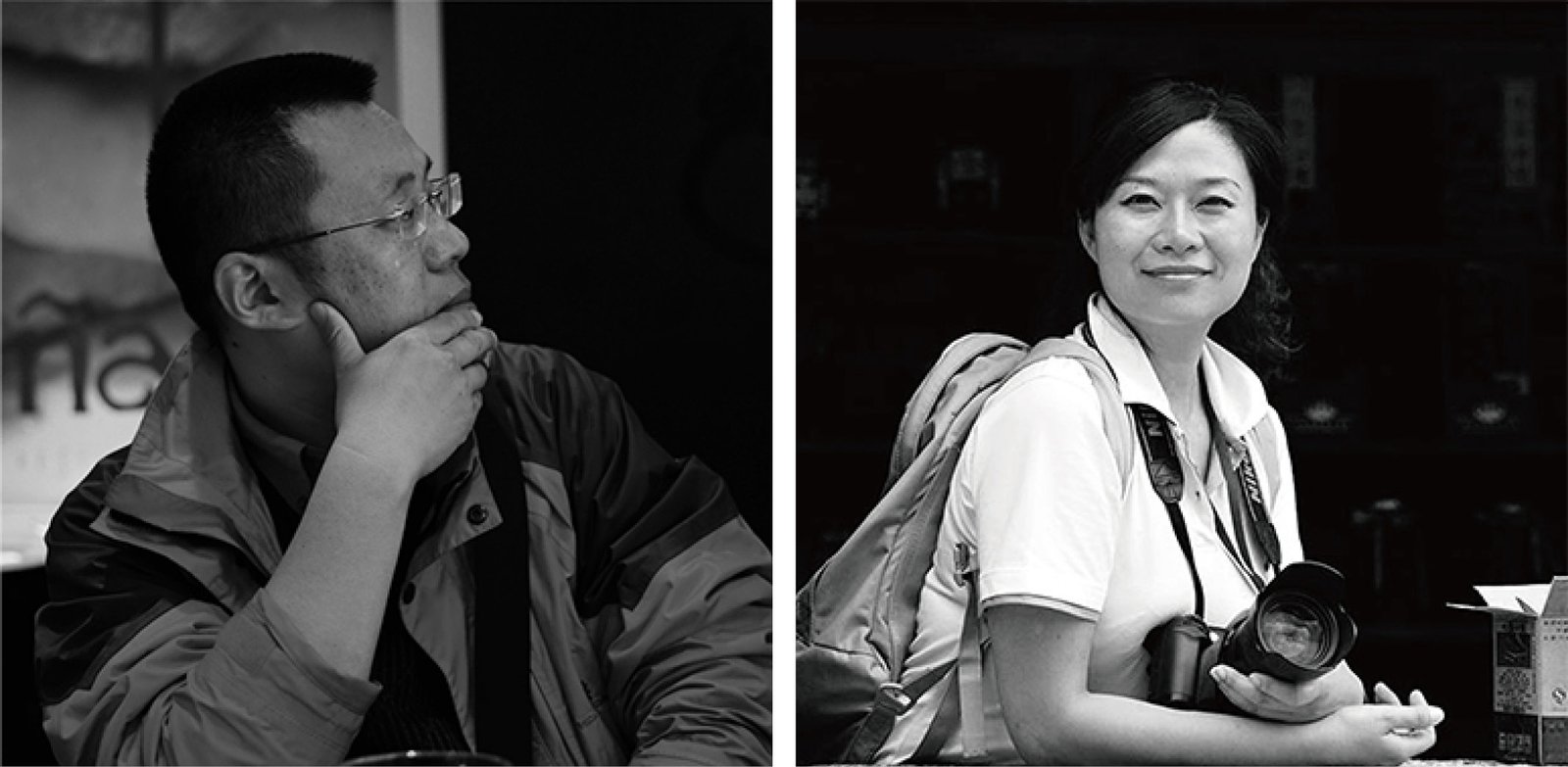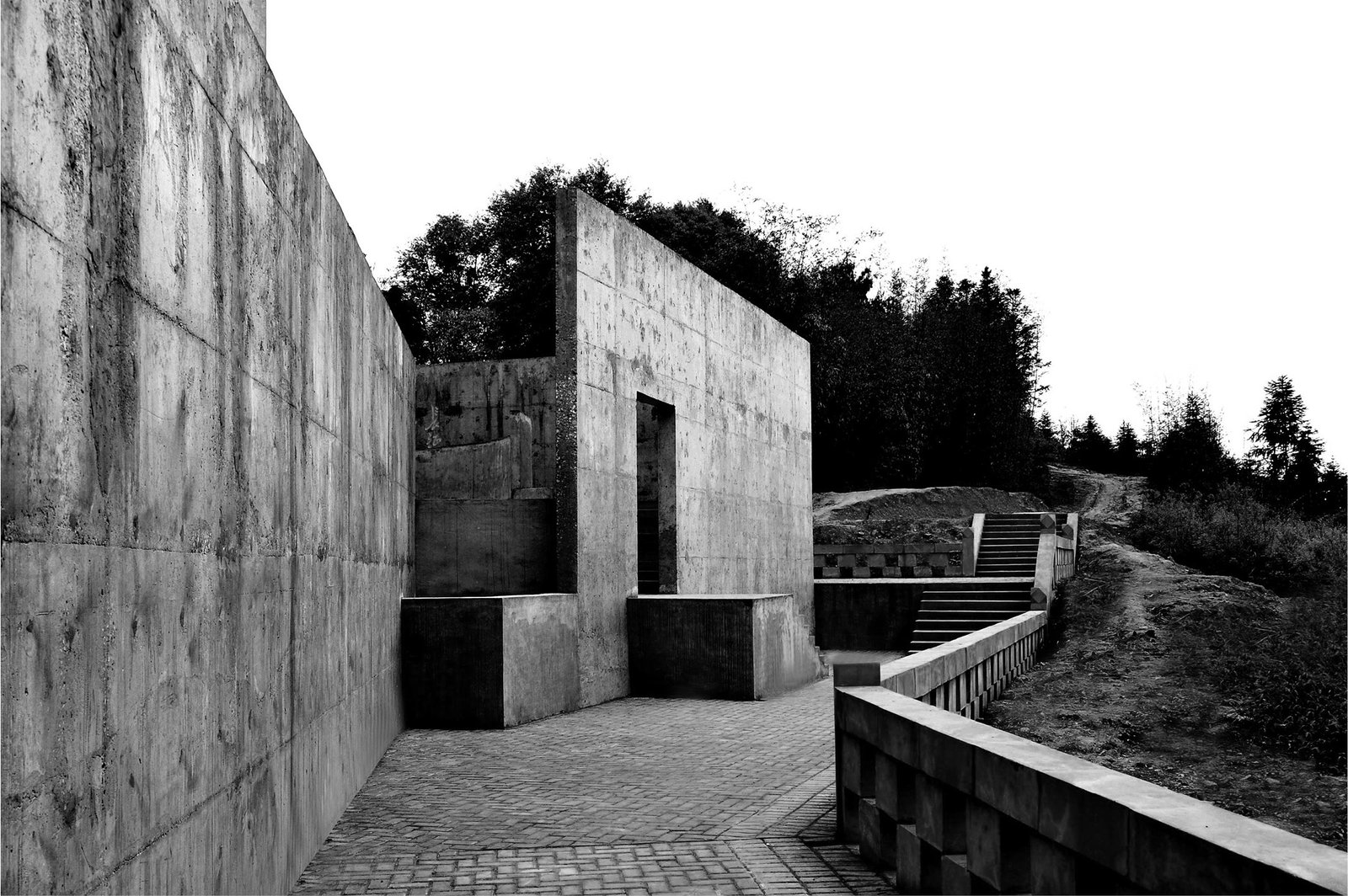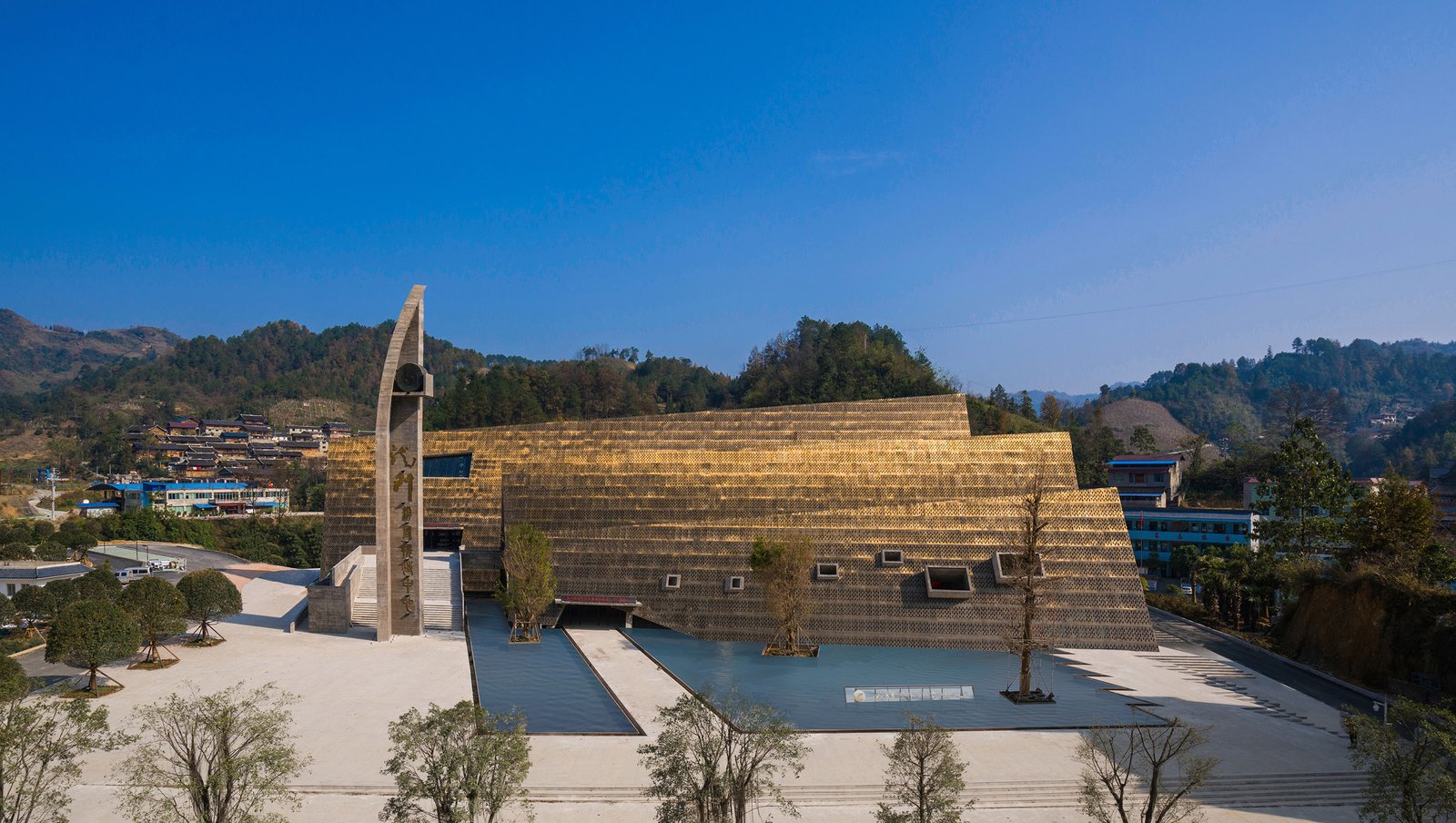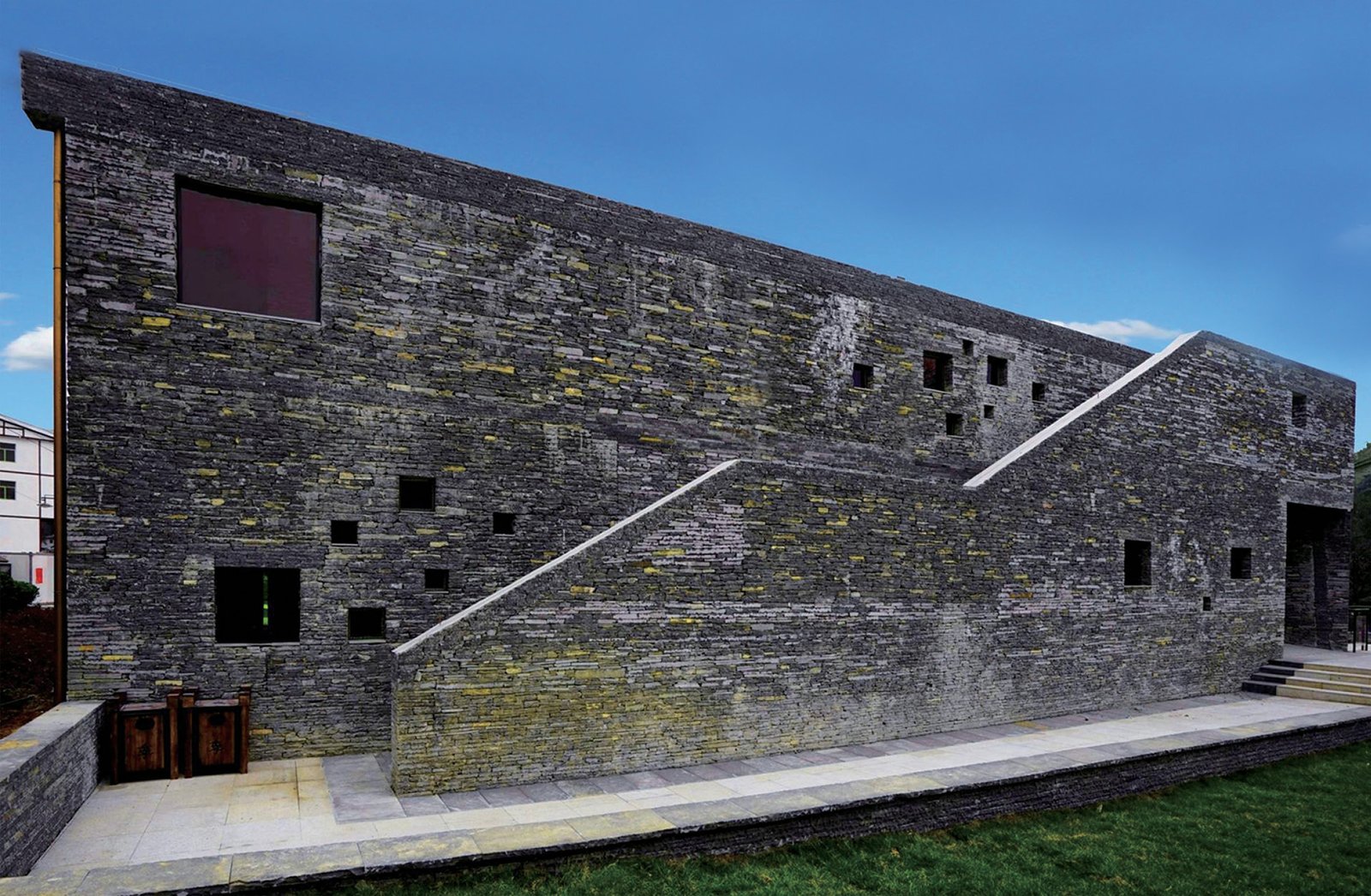Interview Patrick Kasingsing
Images West-Line Studio


Hello! Do introduce yourselves
Hi! We are Haobo Wei and Jingsong Xie from West-Line Studio. We graduated from Chongqing University and Xi’an University of Architecture and Technology respectively.
With the practice we founded, we have been focusing our work in our native province, Guizhou, in southwestern China. Our architecture is informed by and appreciative of the region’s rugged and complicated landforms, and seeks a conversation with our rich and diverse subcultural heritage. We feel that the combination of traditional handicraft skills unique to the region and modern production methods create an effective, memorable and relatable architectural design output. It is identifiable as belonging to its surrounding community.
您好,我们是来自于西线工作室的魏浩波和谢劲松,我们分别毕业于中国西部两所著名的建筑学府:重庆大学和西安建筑科技大学。我们长期致力于研究中国西部复杂地形地貌与多元的次文化圈层聚落背景下建造方式的传承与再发展,将手工技艺传统与现代的生产方式相结合,形成有效的针对中国西部特殊环境的建筑设计方式。
Can you tell us a bit about how the firm started? What were some of the challenges you encountered?
We founded West-Line Studio back in 2004 and we currently practice exclusively in Guizhou Province. The biggest challenge we encountered is the discovery of the community’s general lack of self-confidence in traditional methods and age-old practices, and this has led to the gradual neglect and decay of some of the distinct subcultural heritage of southwestern China. We fear that in such cases, regional integrity will get swallowed up.
西线工作室成立于2004年,十多年来扎根于中国西部进行持续性的思考与实践。由于当地对传统文明的不自信,造成传统的次文化圈公共生活模型与地缘秩序逐渐被忽略。我们担心在这种情况下会吞噬一个地域的整体性特质。我们试图在传统和未来之间寻找中国西部建筑的当代范式,并保持其独特的地缘特征与独特的文明品质。
What made the studio decide to limit practice in the southwestern part of China? What makes the region special and particularly attractive to work in? Do you see yourselves employing this intensely context-centric approach in other regions in China, or even perhaps in Asia?
Guizhou province is our home, and we feel a strong connection towards it. We also feel that is a place of great potential to champion the cause of contemporary vernacular architecture because of the region’s character. In terms of topographical features, Guizhou is unique in that it is where the karst landform is most concentrated in China. From the perspective of social character, Guizhou historically has been a place of migration, where different ethnic settlements co-exist. As a result, we find many unique subcultures and traditions at play. Finally, in terms of the architectural landscape, modern Guizhou has developed a half-industrialized, half-vernacular and half-traditional construction model, a somewhat typical construction reality in contemporary China.
This region is both the best and most challenging collaborator towards our goal. It is our aim to develop a more culturally-sensitive practice of modernism; to find a contemporary paradigm of architecture that straddles both tradition and the future, one that respects and integrates the past with present technologies to move forward. We are considering the possibility of validating this modus operandi in other regions in the future.
这里是我们的家乡。在地缘特征上,贵州是喀斯特地貌为主的地区,是一组地面与谷地空间的基本单元;从共同体公共生活模型的角度分析,贵州在历史上是迁徙民族的发展地,形成多彩的民族聚落;因而产生了很多独特的次文化圈公共生活模型;以建造方式为视点,当代贵州形成了半工业化、半乡土、半传统的“三半”建造状态,这也是典型的当代中国西部基层的建造现实。我们试图探索出一条更为敏感的现代主义实践方式,将传统地缘秩序与共同体公共生活世界渗透其间。当然,我们也希望在其他的地区验证这套工作方法的可能性。




“It is our aim to develop a more culturally-sensitive practice of modernism; to find a contemporary paradigm of architecture that straddles both tradition and the future.”
How big is your studio? Would you say that your studio’s size is perfect for the type of architecture you sought out to do?
The company is around 40 people and at the moment there is no plan to expand it. We believe that the current staff is perfect for the way we work and manage our office routine. With this team, we feel we can achieve originality and construction quality for large and medium-sized projects. In this environment, the lead architect can easily communicate and discuss with each and every designer face-to-face.
公司目前规模40人左右,暂时没有扩大规模的计划。我们认为当前的人员配置比较适合我们的工作方式与专业运作,既能够有效保证中大型项目的原创性与建造品质,同时主持建筑师能够与每位设计师进行面对面的交流与讨论。我们反对大规模作业状态,我们是研究性团队,保证研究性与探讨性是我们工作的核心。
Is there a typology that you’ve always wanted to do but haven’t? Why this in particular?
We would like to explore other architectural typologies, in particular, churches and temples, or concert halls. We look for working methods that trigger resonance among the different types of communities we work with by way of combining place and atmosphere.
诸如教堂,庙宇或音乐厅等,我们试图以场所+氛围的方式探讨不同类别的共同体产生共鸣的工作方式。
Your architecture reveals a penchant for experimentation with materials and textures. What is a material you wish more architects should use?
More than specific materials, we think architects should consider combining the usage of more local materials together with contemporary ones. It is important to explore and discuss the chemistry between these two types of materials as their interplay can add more texture and character to spaces.
地方性材料与通用性、现代性材料相结合,并探讨两类材料相结合在设计观念上所产生的化学反应。


Ultimately, what do you want your end-users to gain from interacting and living within your architecture?
We’d like to heighten the public’s appreciation of the singular and context-responsive brand of vernacular architecture here in western China; it consists of a poetic-tectonic system that marries complicated topography and the social character of its subcultures. It is centered on human relations (social structure), the wild (unorthodox), poetics (moments and scenes that bring back memories), and the geographical relationship between mountains and rivers. It is what makes the vernacular architecture here distinct and exciting to work in.
These contextual qualities are what we seek to interpret into the contemporary setting by emphasizing body perception: dealing with the relationship between man and nature in a formalistic and emotional approach. We are trying to redevelop the essence reflected by these traditional vernacular spaces with the prevailing technical systems while addressing contemporary needs. We hope our end-users feel a connection towards culture and place by experiencing our spaces.
希望引导公众意识到传统中国西部乡土世界是一套完整的关于复杂地貌与次文化圈公共生活模型的诗意建构系统,以人伦(社会结构)、野性(非正统)、诗学(触景生情)及山水关系为核心,以层级嵌套结构为空间生长骨架,注重身体性,成熟而性情地处理人与自然的关系。西线工作室正试图通过对此类乡土空间本质结构的再发展,将之与通用技术体系链接,在当代性的背景下再生这一生存版本。•


More of West-Line Studio’s contemporized ode to vernacular architecture at china-west-line.com
Originally published in Kanto No. 1, 2018. Edits were made to update the article.

